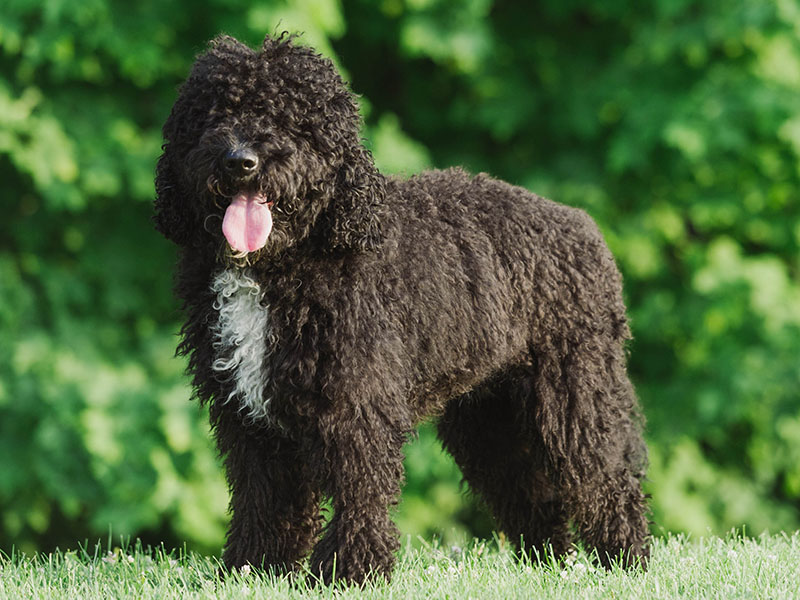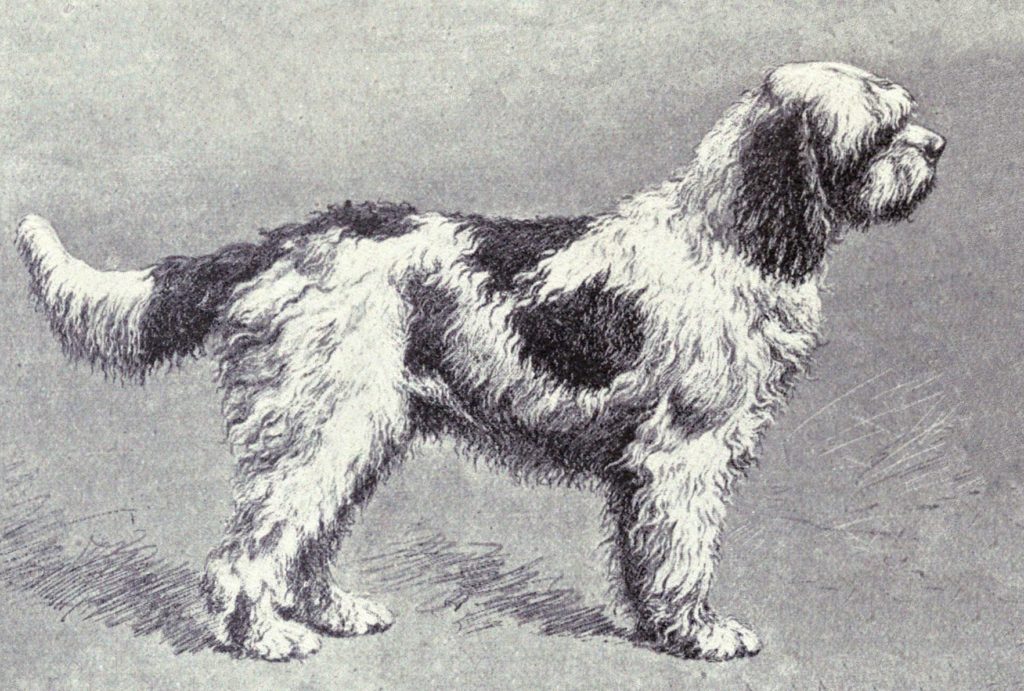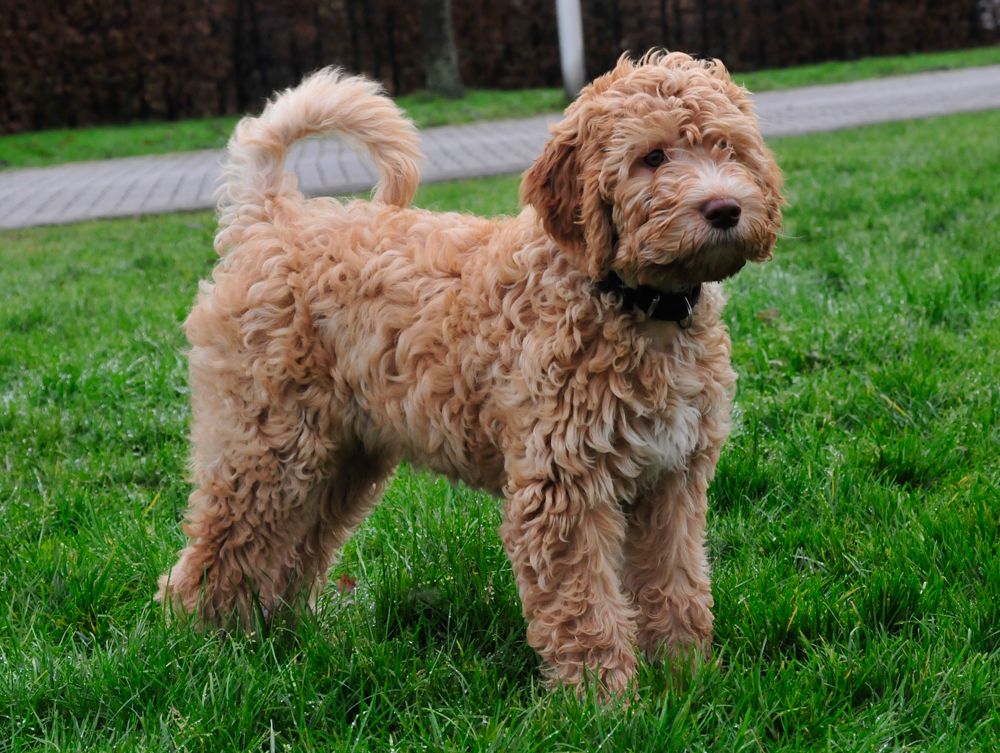The Barbet is a breed of dog, it is a medium-sized French water dog,
The breed name comes from the French word barbe, which means ‘beard’.
The Barbet is a rare breed. Most Barbets, especially those shown in conformation shows, are entirely black, black and white, or brown. It is common to see white chest spots and white paws or legs on black or brown coated dogs. Fawn (that can range from pearl, cream, to gold the shade), and pied variations are reemerging but in limited numbers.
Male Barbets usually grow to be about 21 to 25 in (53 to 64 cm) tall and between 40 and 60 lb (18 and 27 kg), while females usually reach about 20 to 23 in (51 to 58 cm) and 30 to 50 lb (14 to 23 kg).
Appearance

Their coats grow long and must be groomed regularly, otherwise, the coat can become matted and the barbet may lose small tufts of hair-like tumbleweeds.
The accepted colours of the breed are solid black, brown, fawn, grey, pale fawn, white, or more or less pied. All shades of red-fawn and pale fawn are permitted. The shade should, preferably, be the same as the colour of the body. Grey and white are extremely rare; mixed colours (except with white) are considered a fault. The most common colours are black or brown with white markings. The birth figures worldwide for 2007 are 176. All born were black or brown some with white markings on the chest, chin, and legs.
Temperament
The barbet’s personality is described as friendly, joyful, obedient, and intelligent. They are quick to learn and need lifelong obedience training. They are great with children, families, and the elderly. Barbets will bond with their family and prefer to be in the same room with the family at all times. They need exercise daily to keep the dog in a healthy state of mind and body.
They are capable retrievers for waterfowl hunting. In France, the barbet can take the test d’aptitudes naturelles (TAN), a basic water-retrieving test, and has recently been permitted to participate in the brevet de chasse a l’eau (BCE), a general hunting-dog test involving field and water trials. In Germany, the barbet takes part in field trials.
History

The breed is an integral part of dog history, and many familiar breeds have Barbet in their ancestry. Depending on geography and necessity, the barbet connected through the centuries in various capacities, and as a companion dog, but more as an all-around working dog. The term barbet became throughout centuries a generic name for a dog with a long, curly, woolly coat.
Barbet is best known for being a waterfowl retriever in the marshes, wetlands, and estuaries of France. This is where the expression “muddy as a barbet” came from in the 19th century. Between the late 18th to early 19th centuries, the same dog was known as the barbet in France, the barbone in Italy, and the Pudel in Germany; for almost a hundred years the barbets and poodles were considered the same breed.
